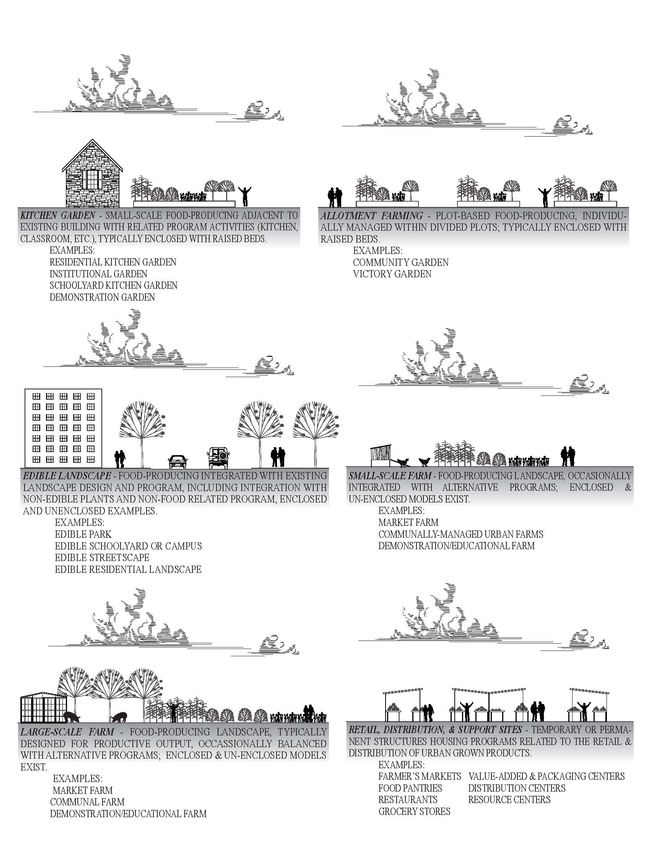Communally-managed urban farms are one of many formal typologies of urban agriculture (UA) gaining popularity in U.S. cities. They are spatially distinct from the more common allotment farming forms (community gardens being the one of the most common form of UA in the U.S.), but can include a wide range of programmatic activities that balance food production with education goals and community gathering. Allotment-style farming, such as community gardens, relies on individualized plots assigned to community members to grow and maintain edible and/or non-edible plants; the communally-managed urban farm is designed and planned holistically, and the responsibility of maintaining the site is shared amongst all volunteers and managers without assigning specific plots. A range of commercial, non-commercial, and hybridized models exist; produce is either shared amongst volunteers, with excess yield donated to local food banks, or sold via farm box subscription. Participation in the growing and maintenance of the site is typically volunteer-based, with no waiting lists associated with access to the site or its products. For this reason, the communally-managed urban farm is gaining popularity in cities where many residents wait years for access to community garden plots. A case-study analysis of five communally-managed urban farms in San Francisco evaluated the ability of these communally-managed farms to operate dualistically as production landscape and public space, identifying the potential conflicts and compatibilities of their spatial requirements. The farms studied were located throughout the city, ranged in size from one-third to over five acres, and represented a range of land tenure techniques with the oldest farm founded in 1994.
The spatial needs of successful public space include a strong neighborhood connection, an accessible perimeter, and a site design and layout that promotes many and diverse users. Communally-managed urban farms benefit from similar spatial considerations: strong connections to neighborhood context insure a strong community commitment to the demanding maintenance needs of a production landscape, strong physical and visual accessibility promotes diverse users of the site, and flexible layouts and designs encourage diverse programs within the site. The consideration of the communally-managed urban farm site as a whole, and not parceled into individualized plots, allows for the use of smaller and more constrained urban sites and a greater shared commitment to the entirety of the site. This can help lessen one of the consequences of a shared public and production landscape: theft. While perimeter fencing might be a requirement of other forms of urban agriculture, a communally-managed urban farm is more resilient to the impacts of leaving a site open and accessible to the public. In addition, the accessibility of the site can lead to a higher volume of volunteer participation, consistent maintenance and good overall site appearance, and a strong sense of ownership by surrounding community (including those not interested in urban farming). Thus, although often perceived as an incompatibility, this investigation reveals that an open site perimeter, as well as the other spatial considerations of a successful public space, are consistent to the design of a successful communally-managed urban farm.
